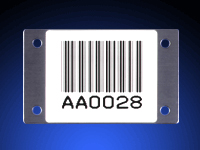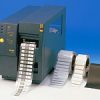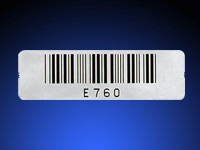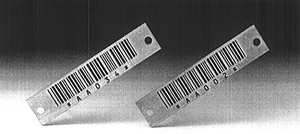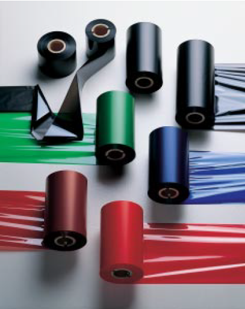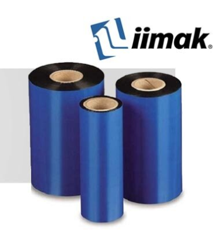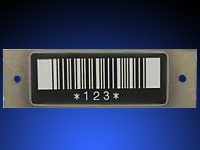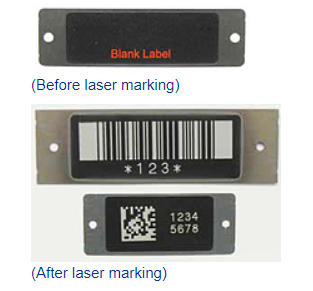Features
Heat resistance
Maximum heat resistance: 600 ± 50°C, 800 ± 100°C, 1000 ± 200°C
Chemical resistance
| Properties | SL-600 | SL-800 | SL-1000 | |
| Acid | H2SO4 (5%, 20°C) | No effect after 100 hours | ||
| H2SO4 (98%, 70°C) | No effect after 5 hours |
No effect after 1 hours |
No effect after 20 hours |
|
| HCl (5%, 20°C) | No effect after 10 days | |||
| HNO3 (5%, 60°C) | No effect after 100 days | |||
| Alkali | NaOH (20%, 20°C) | No effect after 200 days | ||
| Solvent | — | No effect | ||
Weather resistance
1) No effect on ceramic layer after 30 cycles salt spray test of under the below condition.
| Condition | Temperature | Humidity | Time |
| 5% salt water spray | 35±1°C | Over 95% | 2 hours |
| Dry hot air | 60±2°C | — | 4 hours |
| Wetting | 50±2°C | Over 95% | 2 hours |
2) No effect after 4000 hours of weather meter test. (Equivalent to 15 years of outdoor use)
Shock resistance
The barcode label withstands a shock caused by a 200g steel ball dropped from a height of 50cm with no damage.
Super mini label The minimum short side length of a label can be 2 mm.
Specifications
| Material | Heat resistance stainless steel substrate and ceramic layer |
| Thickness | 0.2, 0.4, 0.7, 1.0 mm |
| Mounting | Screw Spot welding Double-sided adhesive tape Soldering Pocket method |
| Barcode | All kind of barcodes including 2D codes |
| PCS | More than 75% |

